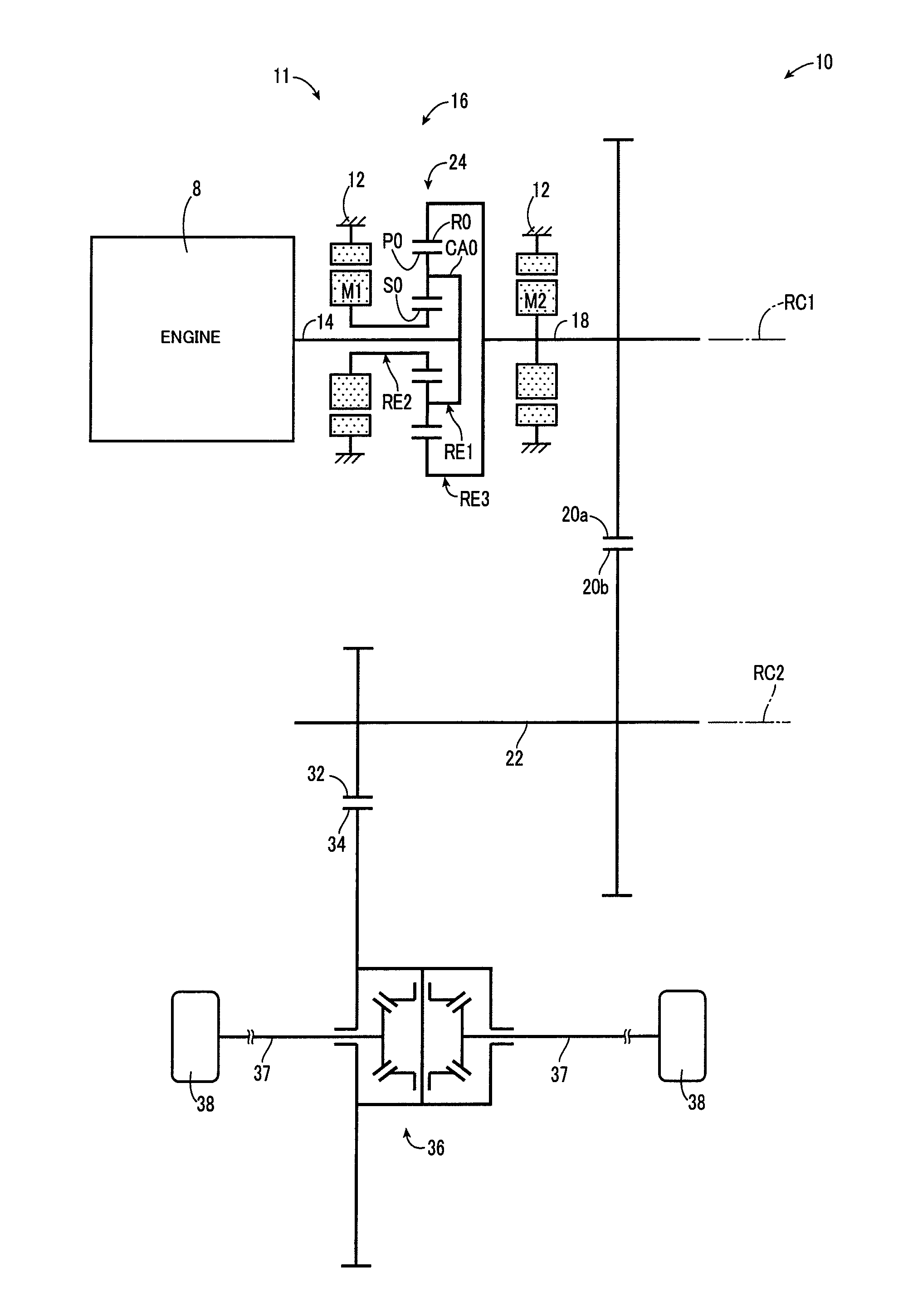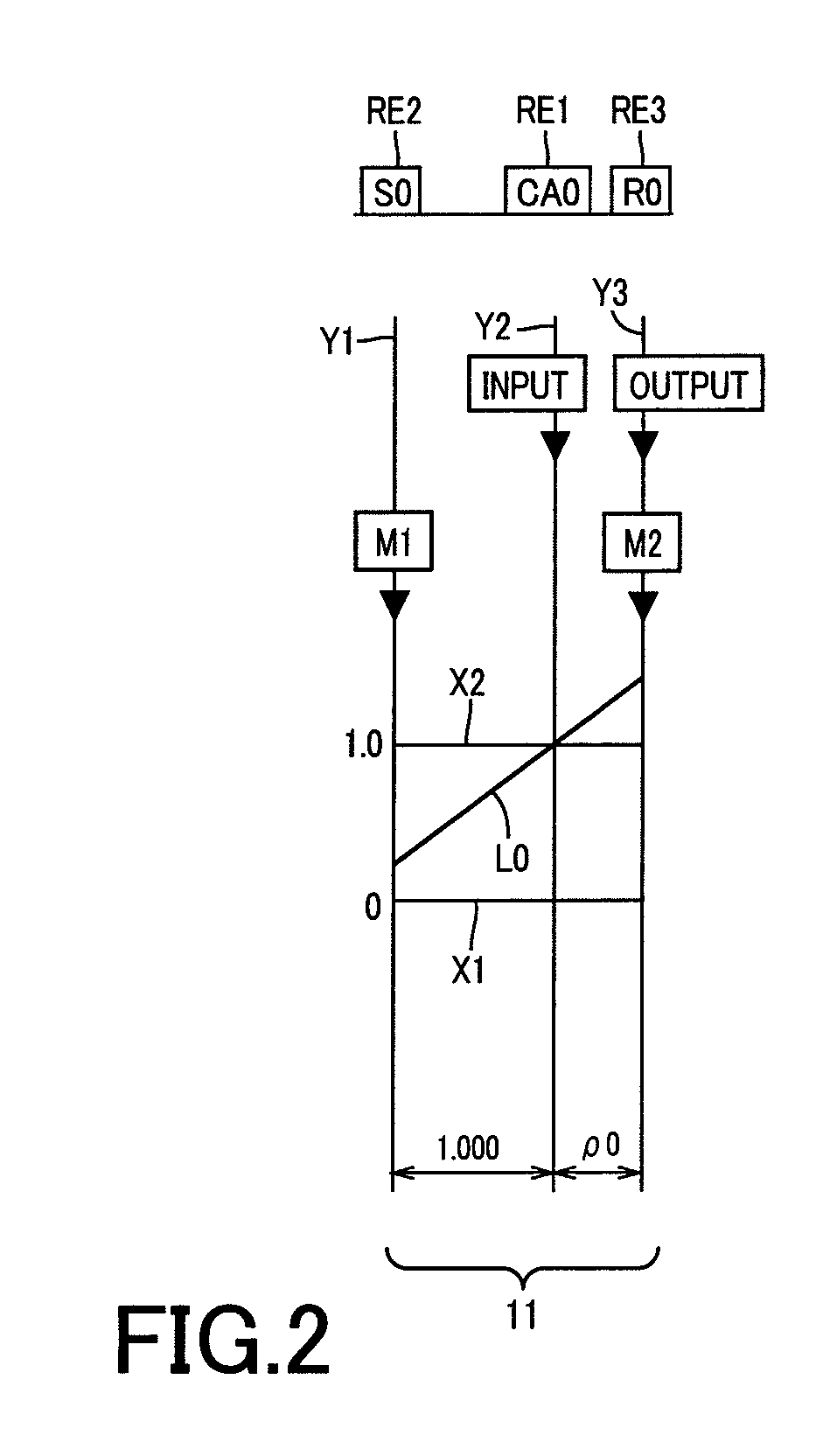Vehicle control device
a technology for controlling devices and vehicles, applied in the direction of brake systems, instruments, transportation and packaging, etc., can solve the problems of limited movement of vehicles, inconvenience, and unknown problems, and achieve the effect of reducing the number of vehicles
- Summary
- Abstract
- Description
- Claims
- Application Information
AI Technical Summary
Benefits of technology
Problems solved by technology
Method used
Image
Examples
first embodiment
[0041]FIG. 1 is a diagrammatic view for explaining a power transmission device for vehicle 10 (hereinafter, represented as “power transmission device 10”) to which a control device of the present invention is applied. Although a vehicle to which the control device of the present invention is applied may be any type of vehicle such as a normal engine vehicle, a hybrid vehicle, and an electric-powered vehicle, following description is given of an example where the control device of the present invention is applied to the power transmission device 10 advantageously used in the hybrid vehicle. Referring to FIG. 1, the power transmission device 10 includes, sequentially arranged on a first axis RC1 within a transmission case 12 (hereinafter, represented as “case 12”) in the form of a non-rotating member fitted to a vehicle body, an input shaft 14 serving as an input rotary member; a differential portion 11 serving as a continuously variable transmission portion coupled directly or indire...
second embodiment
[0110]A function block diagram of a second embodiment is similar to the function block diagram of FIG. 9 of the first embodiment. In the second embodiment, the shift-operation determining means 114 is replaced by a shift-operation determining means 124, with the other means being common to the two embodiments. Differences therebetween will chiefly be described hereinbelow.
[0111]Referring again to FIG. 9, similar to the shift-operation determining means 114, the shift-operation determining means 124 determines based on a detection signal from at least one of the shift sensor 46 and the select sensor 48 whether the shift operating device 42 is shift-operated by the driver or not. The shift-operation determining means 124 is similar to the shift-operation determining means 114 of the first embodiment in that it makes the determination also when one of the shift sensor 46 and the select sensor 48 is abnormal and that, in such a case, the determination is made based on a detection signal...
third embodiment
[0115]A function block diagram of a third embodiment is similar to the function block diagram of FIG. 9 of the first embodiment. In the third embodiment, the abnormality detecting means 110 of the first embodiment is replaced by an abnormality detecting means 130; the vehicle movement prevention control means 118 of the first embodiment is replaced by a vehicle movement prevention control means 132; and the shift position determining means 120 of the first embodiment is replaced by a shift position determining means 134, with the other means being common to the two embodiments. Differences therebetween will chiefly be described hereinbelow.
[0116]The abnormality detecting means 130 of FIG. 9 has, in addition to the function of the abnormality detecting means 110 of the first embodiment, a function of determining, when the shift position detection means (the shift sensor 46 and / or the select sensor 48) having an abnormality detected recovers the normality, that the shift position dete...
PUM
 Login to View More
Login to View More Abstract
Description
Claims
Application Information
 Login to View More
Login to View More - R&D
- Intellectual Property
- Life Sciences
- Materials
- Tech Scout
- Unparalleled Data Quality
- Higher Quality Content
- 60% Fewer Hallucinations
Browse by: Latest US Patents, China's latest patents, Technical Efficacy Thesaurus, Application Domain, Technology Topic, Popular Technical Reports.
© 2025 PatSnap. All rights reserved.Legal|Privacy policy|Modern Slavery Act Transparency Statement|Sitemap|About US| Contact US: help@patsnap.com



